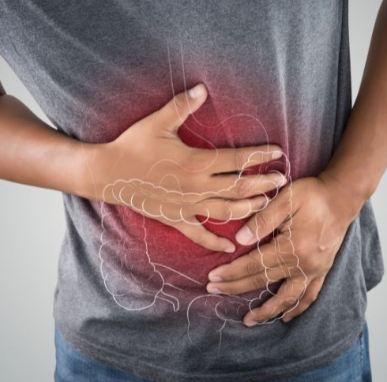Patient and history
According to Matthias Marschner and his colleagues, the 27-year-old homeless man was found by passers-by in a park and taken by emergency services to a clinic in Berlin.
Exam results
- The patient had moderate disturbances of consciousness (9 points on the Glasgow Coma Scale).
- The presence of fever and meningism, as well as diffuse abdominal pain without protective tension.
- The patient’s face was initially very erythematous, his feet were bluish, and his soles were gangrenous.
- He had problems with his joints and muscles.
- The presence of sometimes pustular rashes on the skin and necrotizing bedsores throughout the body, especially on the palms.
- Acute renal failure (stage II).Acute Kidney Injury Network [AKIN]).
- Significant increase in kidney retention values (creatinine 2.21 mg/dL). [0,7 à 1,3 mg/dl]urea 261 mg/dl [14,9 à 38,5 mg/dl]).
- Creatine kinase: 4868 U/L (from 39 to 308 U/L).
- Weight of CC-MB: 36.4 µg/l (from 0 to 3.6 µg/l).
- Myoglobin: 5370 mcg/l (from 16 to 96 mcg/l).
- Glutamate-oxaloacetate transaminase: 245 U/L (range 15 to 37 U/L).
- Glutamate-pyruvate transaminase: 18 U/L (range 16 to 63 U/L).
- Gamma glutamyl transferase: 496 U/L (range 15 to 85 U/L).
- Alkaline phosphatase: 146 U/L (range 46 to 116 U/L).
- Total bilirubin: 2.57 mg/dL (0.2 to 1.0 mg/dL).
- Direct bilirubin: 1.44 mg/dL (0 to 0.3 mg/dL).
- C-reactive protein: 224 mg/L (0 to 3 mg/L).
- Procalcitonin: 32.99 ng/ml (0 to 0.1 ng/ml).
- CSF without features.
- Unremarkable cranial CT scan.
- CT scan of the abdominal cavity: the liver is slightly enlarged, the bile ducts are not dilated.
- Angiography does not indicate any ischemic origin of the feet (in fact, doctors suspect frostbite caused by cold).
- Transesophageal echocardiography showed no evidence of a connection between skin lesions and endocarditis.
- Blood culture at 72 hours: growth Streptobacillus moniliformis.
Diagnosis and treatment
Berlin doctors diagnosed rat bite fever. Therefore, after detection of the pathogen, the patient received treatment with ampicillin + sulbactam, as well as doxycycline for 14 days. After 14 days he was discharged from the hospital in a markedly improved general condition.
Discussion
According to the Berlin authors, “rat bite fever” is a systemic bacterial zoonosis, most often transmitted by rats, but which can be carried by rodents that feed on rodents. The condition is considered underdiagnosed, underdiagnosed, and understudied. The pathogen will Streptobacterium moniliformisand in Asian regions, Spirillum minus. In 100% of wild and domestic rats, as well as in many other rodents Streptobacterium moniliformis will be part of the normal oropharyngeal flora. Rats and mice are carriers and transmitters, but do not get the disease themselves. Contrary to the name, a rat bite is not a prerequisite for the disease. Indirect contact with penetration of microbes through intact skin is sufficient.
The authors also report that a possible rat fever bite caused by Streptobacterium moniliformis heals quickly. After recovery, nonspecific symptoms such as chills, fever, vomiting, headache, muscle and joint pain may persist for up to three weeks. A few days later, rashes appeared on the arms and legs. Without antibiotic treatment, these symptoms can last for weeks or even months. The main risk is the development of infective endocarditis. Rat bite fever is rare but potentially fatal.
A case of rat fever caused by Streptobacterium moniliformis Dr. Till Kammerer also reported several years ago (Ludwig Maximilian University of Munich) and colleagues. In this case, it was a woman who had been exposed to rats and therefore rat feces and urine. According to the authors, the patient developed painful hemorrhagic pustules and bluish lesions on her arms and legs. She may have developed fever and migratory polyarthralgia. Streptobacterium moniliformis would grow in blood-based cultures.




